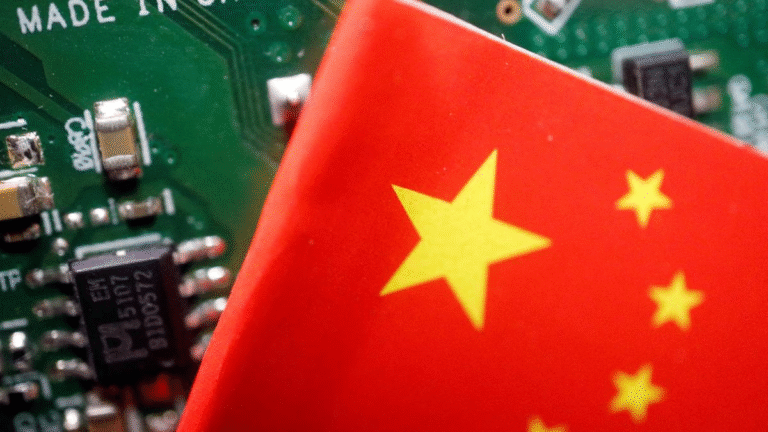
Donald Trump announces a $2,000 “tariff dividend” for Americans funded by tariff revenues. Find out who’s eligible, how it works, and when it may begin.

🇺🇸 Trump’s Big Promise: A $2,000 Dividend for Every American
In a major economic announcement, U.S. President Donald Trump has unveiled plans to distribute a $2,000-per-person “tariff dividend” to American citizens — a bold move he says will directly reward workers for the country’s growing tariff revenues.
Posting on Truth Social on Sunday, Trump declared that Americans would soon receive “a dividend of $2,000 a person (not including high-income people!)” funded entirely by the billions collected from tariffs on imported goods.
Calling critics of the plan “FOOLS!”, Trump insisted that tariff collections have become large enough to pay Americans directly, while also helping reduce the national debt, currently hovering around $37 trillion.
“We are taking in Trillions of Dollars and will soon begin paying down our ENORMOUS DEBT. Record investment in the USA, plants and factories going up all over the place,” Trump wrote.
💰 What Is the Tariff Dividend?
The tariff dividend is Trump’s latest idea to return tariff-generated revenue back to American households. Essentially, the federal government collects money from tariffs imposed on imports, and under this proposal, a portion of that revenue would be distributed to eligible Americans as a cash payout or tax credit.
While the concept sounds simple, it marks a radical shift in U.S. fiscal policy, linking trade tariffs — which are traditionally used to protect domestic industries — directly to household income support.
If implemented, this would be the first-ever “tariff-funded” direct dividend program in U.S. history.
👨👩👧👦 Who Would Be Eligible for Trump’s $2,000 Payout?
Eligibility details are still under wraps, but Trump’s post and earlier statements strongly indicate that middle- and lower-income Americans would be the main beneficiaries.
“A dividend of $2,000 a person (not including high-income people!) will be paid to everyone,” Trump emphasized.
This means high earners — potentially those above certain income thresholds set by the IRS — could be excluded from receiving the payment.
In past remarks, Trump hinted that the distribution could mirror stimulus checks issued during the COVID-19 pandemic, targeting families and workers most affected by inflation and rising living costs.
Analysts suggest the cutoff line may resemble income limits from past stimulus programs — around $75,000 for individuals and $150,000 for couples, though no official numbers have been released.
⏰ When Will Americans Receive the Tariff Dividend?
That’s the million-dollar question — and one without a clear answer yet.
Trump has not given a timeline for rollout, stating only that the money would come from ongoing tariff revenue collections. The actual implementation date will depend on several factors:
- Congressional approval (which could take months).
- Legal validation of existing tariffs (currently under judicial review).
- Budget structuring within the Treasury Department.
Economic experts predict that if approved, the payouts might not begin until mid-2026, depending on how quickly Congress acts and whether tariff collections remain strong enough to sustain such a large-scale payment.
⚙️ How the $2,000 Tariff Dividend Could Work
According to U.S. Treasury Secretary Scott Bessent, the dividend might not come as a single check, but rather through a series of tax-related benefits.
“The $2,000 dividend could come in lots of forms, in lots of ways,” Bessent said, suggesting options like:
- Tax reductions on income or payroll taxes.
- Exemption from taxes on tips and overtime pay.
- No tax on Social Security income.
- Deductibility of auto loans and household expenses.
These changes could be rolled into Trump’s proposed tax reform agenda, making the “tariff dividend” more of an ongoing financial relief package rather than a one-time handout.
In practical terms, that means workers could see extra money in their paychecks through lower tax withholdings instead of direct government checks.
🌎 Why Trump’s Tariff Plan Matters — and Why It’s Controversial
Trump’s idea connects two highly debated economic topics: trade policy and domestic income support.
Under his administration, tariffs — especially on Chinese imports — have generated billions in federal revenue. Trump argues that these funds should “go back to the American people,” effectively turning trade penalties into citizen rewards.
However, critics point out that tariffs often raise consumer prices, meaning Americans might be paying more upfront for imported goods, only to receive a dividend later funded by those same payments.
Economists are divided:
- Supporters say it’s an innovative way to redistribute tariff gains to the middle class.
- Opponents call it “circular economics”, arguing that tariffs function like indirect taxes on consumers.
🧾 Congress and Legal Hurdles Ahead
Even if Trump pushes the plan forward, the tariff dividend cannot materialize without Congressional approval.
A similar idea surfaced earlier in 2024, when Senator Josh Hawley (R-Missouri) proposed a $600 “tariff rebate” for American households and dependents. That bill stalled but signaled Republican interest in tariff-based income programs.
The plan also faces potential legal challenges, as the U.S. Supreme Court is currently reviewing whether certain tariffs imposed under Trump’s earlier trade policies were constitutional.
Justices are questioning whether tariffs were used appropriately as “emergency tools” or if they effectively became new taxes, which Congress alone has authority to impose.
Until the Court’s decision is finalized, the legal foundation of Trump’s tariff revenue claims remains uncertain.
🏦 Can Tariffs Really Fund $2,000 Per American?
This is where the math gets tricky.
While tariffs have generated billions in revenue, a nationwide payout could cost hundreds of billions of dollars. For example, with approximately 170 million eligible adults, a $2,000 dividend would require about $340 billion.
Even under optimistic scenarios, annual tariff collections currently fall well below that mark.
To make the numbers work, Trump’s administration would likely need to:
- Increase tariffs on certain goods (especially from China and Mexico).
- Broaden the range of taxed imports.
- Phase the payments over time or tie them to specific industries.
Critics worry that this could spark trade tensions, potentially leading to retaliatory tariffs from trading partners — something that could hurt U.S. exports and businesses.
📊 Economic & Political Analysis: A Strategic Move
Economically, Trump’s $2,000 tariff dividend could energize consumer spending, similar to stimulus checks during the pandemic. Politically, it strengthens his populist image as a “President for the working class.”
By linking the payout to “tariff fairness”, Trump is reframing trade policy as a direct economic benefit to ordinary Americans rather than just an abstract political tool.
However, economists caution that the inflationary risk of such cash infusions could offset some of the benefits, especially if tariffs continue to raise product prices.
Still, for many working-class Americans, an extra $2,000 could provide short-term relief amid rising costs of living and housing.
🧠 Final Take: A Bold Idea, But a Long Road Ahead
Trump’s “tariff dividend” is bold, populist, and politically strategic — but it faces a steep climb before becoming reality.
If it clears legal and congressional hurdles, it could redefine how tariff revenue is used in the U.S., potentially transforming it from a trade weapon into a domestic welfare tool.
For now, Americans are watching closely, waiting for clearer details on who qualifies, how payments will be made, and when the checks — or tax cuts — will arrive.
Whether this is economic innovation or political theater will depend on what happens next in Washington and Wall Street.





